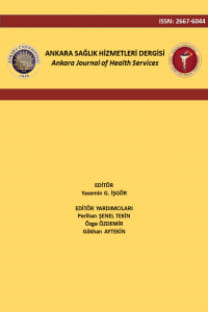Otofaji: Programlı Hücre Ölümü
Kalite kontrol sistemi olarak çalışan otofaji mekanizması, uzun ömürlü proteinlerin, fonksiyonu bozulmuş organellerin, sitozolik parçaların, hasarlı makromoleküllerin ve patojenlerin yok edilmesinden sorumlu fizyolojik bir fenomendir. otofaji Biyolojik geri dönüştürme fonksiyonuna ek olarak, obezite ve diyabet gibi metabolik sendromların patogenezinde de önemli bir rol oynamaktadır. Hücrelerin fonksiyonel olarak korunması için gerekli enerji çok fazladır ve anabolik ve katabolik metabolizma arasındaki dengedeki bozukluklar hastalıklara katkıda bulunmaktadır. Otofajinin disfonksiyonu birçok hastalığın başlamasına ve ilerlemesine neden olmaktadır. Hücresel içeriğe bağlı olarak apoptozisin yetersiz kaldığı koşullarda otofaji ile hücre ölümü gerçekleşmektedir. Bu nedenle, metabolik düzenlemede otofajinin rolü ve moleküler mekanizmaları üzerine araştırmalar gittikçe artmıştır. Bazal otofaji, tümörogenez sırasında tümör baskılayıcı bir mekanizma olarak çalışırken; aşırı otofaji belirli kanserlerde hayatta kalma yolağı olarak çalışmaktadır. Bu alandaki araştırmalar kanser, enfeksiyonlar ve nörodejenaratif ve metabolik hastalıklar gibi sağlık problemleri için yeni tedavi yöntemlerine yol açma potansiyeline sahip olacaktır
Anahtar Kelimeler:
Otofaji, apoptozis, programlı hücre ölümü
Working as a quality control system, autophagy is a physiological phenomenon responsible for the degradation of long lived proteins, dysfunctional organelles, cytosolic fragments, damaged marcomolecules and pathogens in cells. In addition to its biological recycling function, autophagy plays a significant role in the pathogenesis of metabolic syndromes such as obesity and diabetes. Since the energy required to maintain cell function is high, disturbances in the balance between anabolic and catabolic metabolism possibly contribute to various disorders.Dysfunction of autophagy leads to the initiation and progression of multiple diseases. Autophagy contributes to cell death depending on the cellular contents especially under conditions associated with impaired apoptosis. Therefore, there has been increasing research on the molecular mechanisms and metabolic regulation of autophagy. Basal autophagy may function as a tumor suppressive mechanism during tumorigenesis; however, excessive autophagy works as a pro-survival pathway in some cancer types. Research in this area is critical for the development of novel therapeutics in health problems such as cancer, infections, neurodegenerative and metabolic diseases
Keywords:
Autophagy, apoptosis, programmed cell death,
___
- Anding, Al., Baehrecke, E. H. (2015) Autophagy İn Cell Life And Cell Death. Apoptosis And Development. Volume 114, Pages 67–91.
- Galluzzi, L., Vitale, I., Abrams, J. M., Alnemri, E. S., Baehrecke, E. H., Blagosklonny, M.V. (2012). Molecular Definitions Of Cell Death Subroutines: Recommendations Of The Nomenclature Committee On Cell Death . Cell Death And Differentiation, 19(1), 107–120.
- Gözuacik, D., Kimchi, A. (2006) Dapk Protein Family And Cancer. Autophagy. 2(2):74-9.
- Gözuacik, D., Kimchi, A. (2007). Autophagy And Cell Death. Curr Top Dev Biol. 78:217-45.
- Hansen, M., Taubert, S., Crawford, D., Libina, N., Lee, S. J., Kenyon, C. (2007). Lifespan Extension By Conditions That İnhibit Translation İn Caenorhabditis Elegans. Aging Cell 6, 95-110.
- Hars, E. S., Qi, H., Ryazanov, A. G., Jin, S., Cai, L., Hu, C., Liu, L. F. (2007). Autophagy Regulates Ageing İn C. Elegans. Autophagy 3, 93-95.
- Juhasz, G., Hill, J. H., Yan, Y., Sass, M., Baehrecke, E. H., Backer, J. M., Et Al. (2008). The Class Iii Pi(3)K Vps34 Promotes Autophagy And Endocytosis But Not Tor Signaling İn Drosophila. The Journal Of Cell Biology, 181(4), 655–666.
- Kroemer, G., Marino, G., Levine, B. (2010). Autophagy And İntegrated Stress Response. Mol Cell 40(2):280- 293.
- Lee, J., Giordano, S., Zhang, J. (2012) Autophagy, Mitochondria And Oxidative Stress: Cross-Talk And Redox Signalling. Biochem J. 15;441(2):523-40.
- Levine, B. Yuan, J. (2005). Autophagy İn Cell Death: An İnnocent Convict?. The Journal Of Clinical Investigation, 115; 2679- 2688.
- Majeski, A.E, Dice, J.F. (2004) Mechanisms Of Chaperone-Mediated Autophagy. Int J Biochem Cell Biol. Dec;36(12):2435-44.
- Mak, T. (2003). Apoptosis: "This Death That Makes Life Live".Biol Blood Marrow Transplant;9:483-8.
- Mehrpour M, Esclatine A, Beau I, Codogno P. (2010). Overwiew Of Macroautophagy Regulation İn Mammalian Cells. Cell Research 20:748-762.
- Meléndez, A. Levine, B. Autophagy İn C. Elegans (2009), Wormbook, Ed. The C. Elegans. Research Community, Wormbook, Doi/10.1895/Wormbook.1.147.1.
- Mizushima, N., Levine, B., Cuervo, A.M., Klionsky, D.J. (2008) Autophagy Fights Disease Through Cellular Self-Digestion. Nature 451, 1069-1075.
- Papinski, D., Schuschnig, M., Reiter, W., Wilhelm, L., Barnes, C. A., Maiolica, A., Et Al. (2014). Early Steps İn Autophagy Depend On Direct Phosphorylation Of Atg9 By The Atg1 Kinase. Molecular Cell, 53(3), 471–483.
- Shintani, T, Klionsky, D.J. (2004). Autophagy İn Health And Disease: A Double-Edged Sword. Science 2004;306:990-5.
- Xiao, G., (2007).Autophagy And Nf-Kb: Fight For Fate. Cytokine Growth Factor Rev. Jun-Aug;18(3-4):233-43.
- Xie, Z., Klionsky, D. J.(2007). Autophagosome Formation: Core Machinery And Adaptaion. Nat Cell Biol 9:1102-9.
- Yayın Aralığı: Yılda 2 Sayı
- Başlangıç: 2000
- Yayıncı: Ankara Üniversitesi
Sayıdaki Diğer Makaleler
Türk edebiyatından yas teması örnekleri
Gülbahar BAŞTU, E.tuğba ÖZEL-KIZIL, Yasemin HOŞGÖREN ALICI, Sevinç KIRICI
Aslı KOÇ, Arzu Zeynep KARABAY, Tülin ÖZKAN, Zeliha BÜYÜKBİNGÖL, Asuman SUNGUROĞLU, Fügen AKTAN
Buket ALTINOK, Asuman SUNGUROĞLU
Aslı KOÇ, Arzu Zeynep KARABAY, Tülin ÖZKAN, Zeliha BÜYÜKBİNGÖL, Asuman SUNGUROĞLU, Fügen AKTAN
Bilişsel rezerv ve yaşlanan beyin
Gülbahar BAŞTUĞ, E. Tuğba ÖZEL-KIZIL
Geriatrik bilateral transfemoral amputede stubbies denemesi
Serap ALSANCAK, Haydar ALTINKAYNAK, Senem GÜNER
